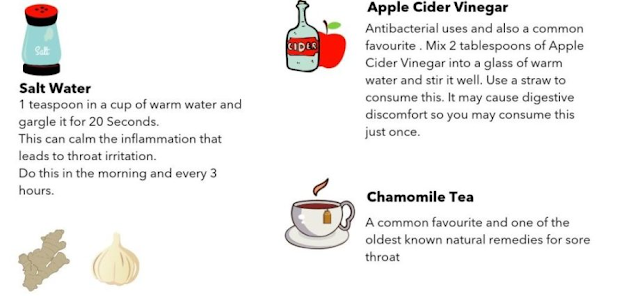Kaarthika Maasa Vaibhavam and Vanabhojanalu: A Sacred Time of Devotion and Togetherness
Kaarthika Maasa, one of the holiest months in the Hindu calendar, holds immense spiritual significance for devotees across India, especially in South India. This sacred month, dedicated to Lord Shiva and Lord Vishnu, usually falls between October and November, following the lunar calendar. It is a period marked by increased religious activities, rituals, and prayers, aimed at seeking divine blessings, spiritual upliftment, and inner purification. Kaarthika Maasa is also closely associated with the practice of Vanabhojanalu, a time-honored tradition where families and communities gather for outdoor feasts amidst nature.
In this blog, we will delve deep into the **Vaibhavam (grandeur) and Visishtatha (uniqueness)** of Kaarthika Maasa and explore the beauty of the tradition of Vanabhojanalu.
Natural Panchmukhi Rudraksha Japa Mala
**Kaarthika Maasa Vaibhavam: The Grandeur of Devotion**
Kaarthika Maasa holds a special place in the hearts of devotees as it is considered the most auspicious time for performing religious rituals and worship. The significance of this month is deeply rooted in the belief that during Kaarthika Maasa, the cosmic energies are aligned in such a way that the blessings of Lord Shiva and Lord Vishnu are magnified for those who seek them with devotion.
**Spiritual Significance of Kaarthika Maasa**
1. **Devotion to Lord Shiva**: Kaarthika Maasa is closely associated with Lord Shiva, who is worshipped with utmost reverence throughout the month. Mondays in this month are particularly significant, as they are dedicated to fasting and offering prayers to Lord Shiva. The ritual of lighting lamps in the evening, known as **Deepa Aradhana**, holds great importance, as it is believed to dispel darkness and bring spiritual enlightenment. Devotees also perform **Rudrabhishekam**, an elaborate ritual to honor Lord Shiva, seeking his blessings for peace, prosperity, and well-being.
2. **Worship of Lord Vishnu**: In addition to Lord Shiva, Kaarthika Maasa is also a time for devotees to worship Lord Vishnu. The month is known for the celebration of **Kaarthika Ekadashi**, a day dedicated to fasting and praying to Lord Vishnu. This Ekadashi is regarded as one of the most sacred days of the year, and observing fast on this day is believed to absolve individuals of sins and lead them on the path to moksha (liberation).
3. **Tulasi Puja**: Another important aspect of Kaarthika Maasa is the **worship of Tulasi** (Holy Basil), which is considered a sacred plant in Hinduism. During this month, special rituals are performed to honor the Tulasi plant, especially on **Tulasi Vivah**, the ceremonial marriage of Tulasi to Lord Vishnu. This event marks the end of the monsoon season and the beginning of the harvest season, symbolizing the union of nature and divinity.
4. **Lighting of Lamps (Deepotsavam)**: Kaarthika Maasa is known as the "Month of Lights," as devotees light oil lamps in their homes and temples every evening. The act of lighting lamps is symbolic of dispelling ignorance and illuminating the path to spiritual growth. Temples are adorned with countless lamps, creating a mesmerizing atmosphere that elevates the spiritual experience.
Divine Hindu Karungali Mala Original
**Rituals and Observances During Kaarthika Maasa**
1. **Early Morning Bath (Kaarthika Snanam)**: One of the most important practices during Kaarthika Maasa is the early morning ritual bath, known as **Kaarthika Snanam**. Devotees rise before dawn and take a holy dip in rivers, lakes, or even at home. This practice is believed to purify the body and soul, preparing devotees for a day of devotion and prayer.
2. **Fasting and Vratas**: Fasting during Kaarthika Maasa is a common practice, especially on **Kaarthika Ekadashi** and **Mondays**, known as **Somvar Vratam**. Devotees believe that fasting and abstaining from worldly pleasures during this month can lead to spiritual enlightenment and divine blessings.
3. **Worship of Lord Ayyappa**: Kaarthika Maasa is also significant for the devotees of Lord Ayyappa, particularly in South India. Many devotees begin their **Ayyappa Deeksha** (a period of austerity and devotion) during this month, preparing for the pilgrimage to **Sabarimala**.
4. **Charitable Deeds**: Kaarthika Maasa is not just about individual spiritual practices but also emphasizes the importance of **dharma** (righteousness) through acts of charity. Devotees are encouraged to offer food, clothing, and other essentials to the needy, as these acts of kindness are believed to bring divine grace.
**Vanabhojanalu: The Joy of Nature and Community**
A unique tradition that adds to the charm of Kaarthika Maasa is **Vanabhojanalu**, which translates to "forest feast" or "picnic." This tradition, predominantly observed in South India, involves families and communities gathering in natural settings like forests, gardens, or near water bodies to share meals and enjoy each other's company.
**The Cultural Importance of Vanabhojanalu**
5 Mukhi Rudraksha Mala Pure Silver
1. **Connecting with Nature**: Vanabhojanalu is a practice that encourages people to step out of their homes and spend time in nature. The serene environment of forests and gardens is believed to be conducive to spiritual growth, and spending time in nature during this sacred month is considered a form of worship. The tradition fosters a deeper connection with the natural world, reminding individuals of the divine presence in every aspect of creation.
2. **Community Bonding**: Vanabhojanalu is not just a family affair but a community event. Friends, relatives, and neighbors come together to cook, share meals, and participate in devotional activities such as bhajans (devotional songs) and pujas. This strengthens social ties and creates a sense of unity and togetherness.
3. **Symbolism of Food Sharing**: The act of sharing food during Vanabhojanalu has deep symbolic meaning. It reflects the principle of **annadanam** (offering food to others), which is considered the highest form of charity in Hinduism. The food is often prepared with ingredients offered during rituals, and sharing it with others is believed to bring spiritual merit.
4. **Celebrating Simplicity**: Vanabhojanalu is a celebration of simplicity and gratitude. The food prepared for the picnic is usually simple, vegetarian, and prepared with devotion. This reflects the essence of Kaarthika Maasa, which encourages devotees to lead a life of austerity, humility, and reverence for nature.
**Why Kaarthika Maasa and Vanabhojanalu are Relevant Today**
In today’s fast-paced world, the significance of Kaarthika Maasa and Vanabhojanalu cannot be overstated. The practices associated with this sacred month promote mindfulness, gratitude, and a deeper connection with the divine. They also provide an opportunity to break away from the distractions of modern life and focus on spiritual growth, family, and community.
**Mindful Living**: Kaarthika Maasa encourages devotees to live mindfully, focusing on their spiritual practices and personal growth. The rituals, fasting, and acts of charity serve as reminders to lead a life of purpose and integrity.
The Immortals of Meluha, The Secret of The Nagas, The Oath of The Vayuputras
**Sustainable Living**: The tradition of Vanabhojanalu aligns with the principles of sustainable living. By spending time in nature and celebrating its beauty, devotees are reminded of the importance of preserving the environment for future generations.
**Strengthening Bonds**: In a world where relationships are often strained by busy schedules, Vanabhojanalu provides a platform for families and communities to come together, share meals, and create lasting memories.
Kaarthika Maasa is a time of profound spiritual significance and devotion, marked by rituals that promote inner growth and connection with the divine. The grandeur of this sacred month lies not only in its religious practices but also in the sense of community and simplicity it fosters through traditions like Vanabhojanalu. In a world that is constantly changing, the practices of Kaarthika Maasa and Vanabhojanalu serve as timeless reminders of the importance of faith, togetherness, and reverence for nature.
As we embrace the spirit of Kaarthika Maasa, let us also take the opportunity to reconnect with ourselves, our communities, and the natural world, finding peace and fulfillment in this sacred time of the year.









